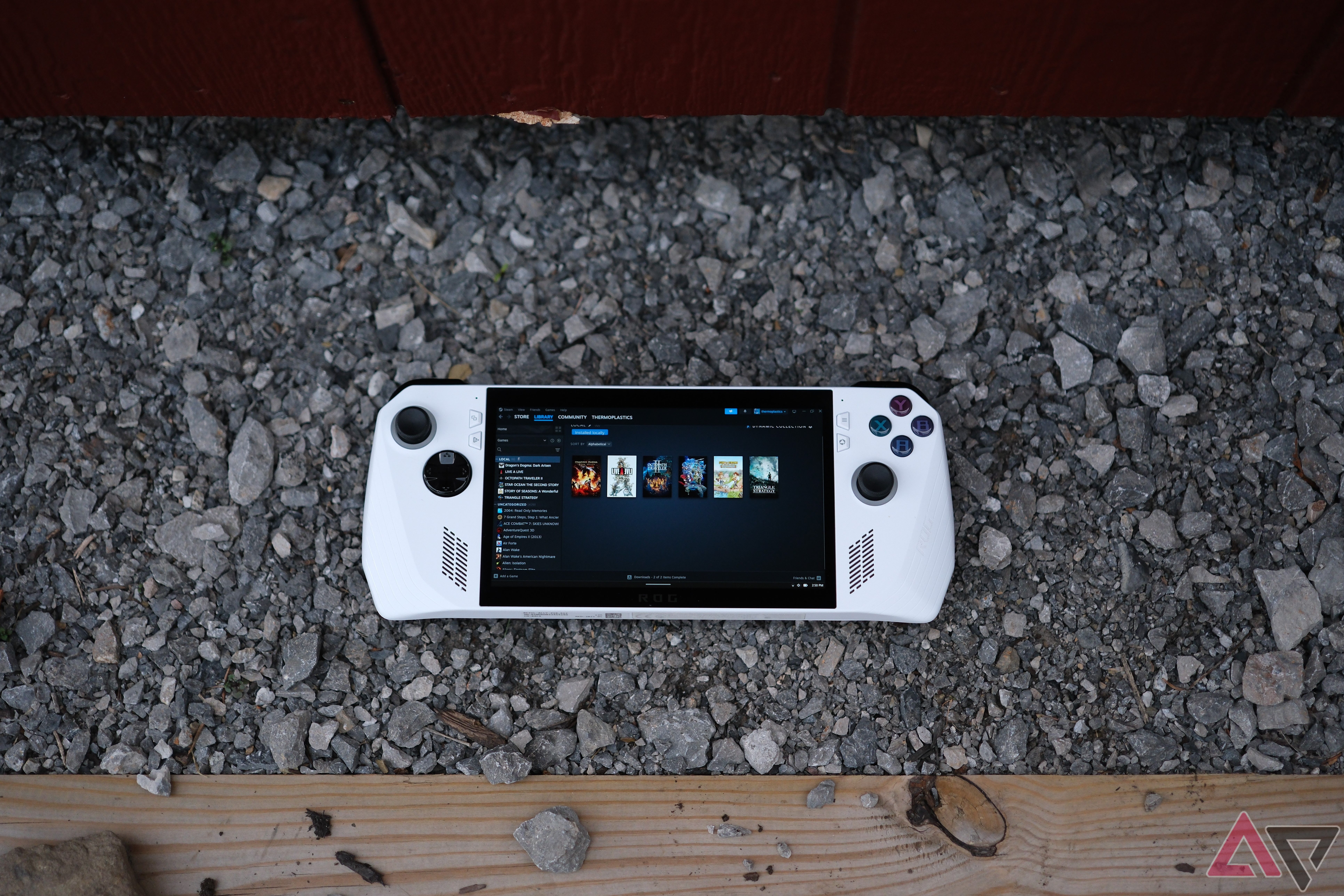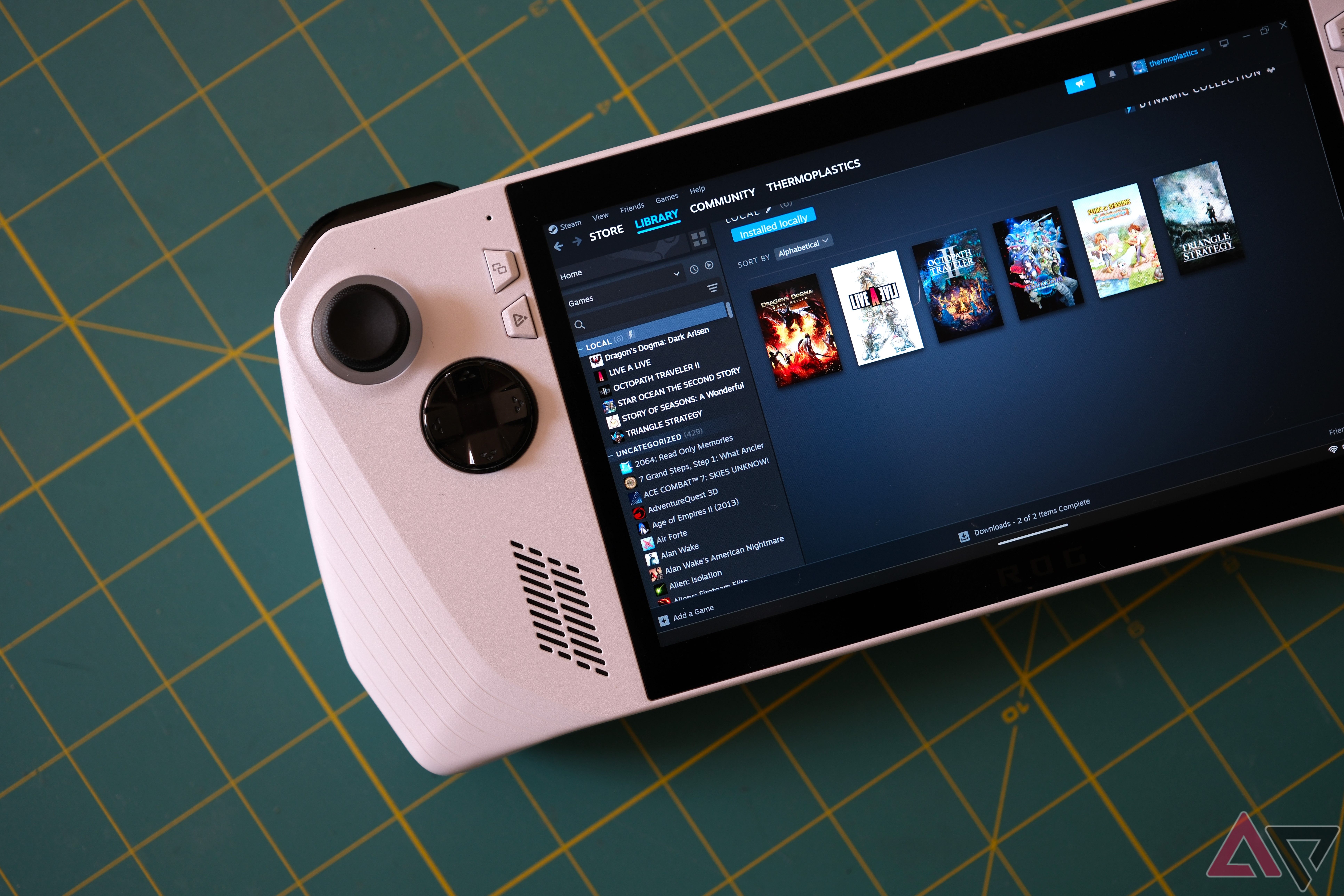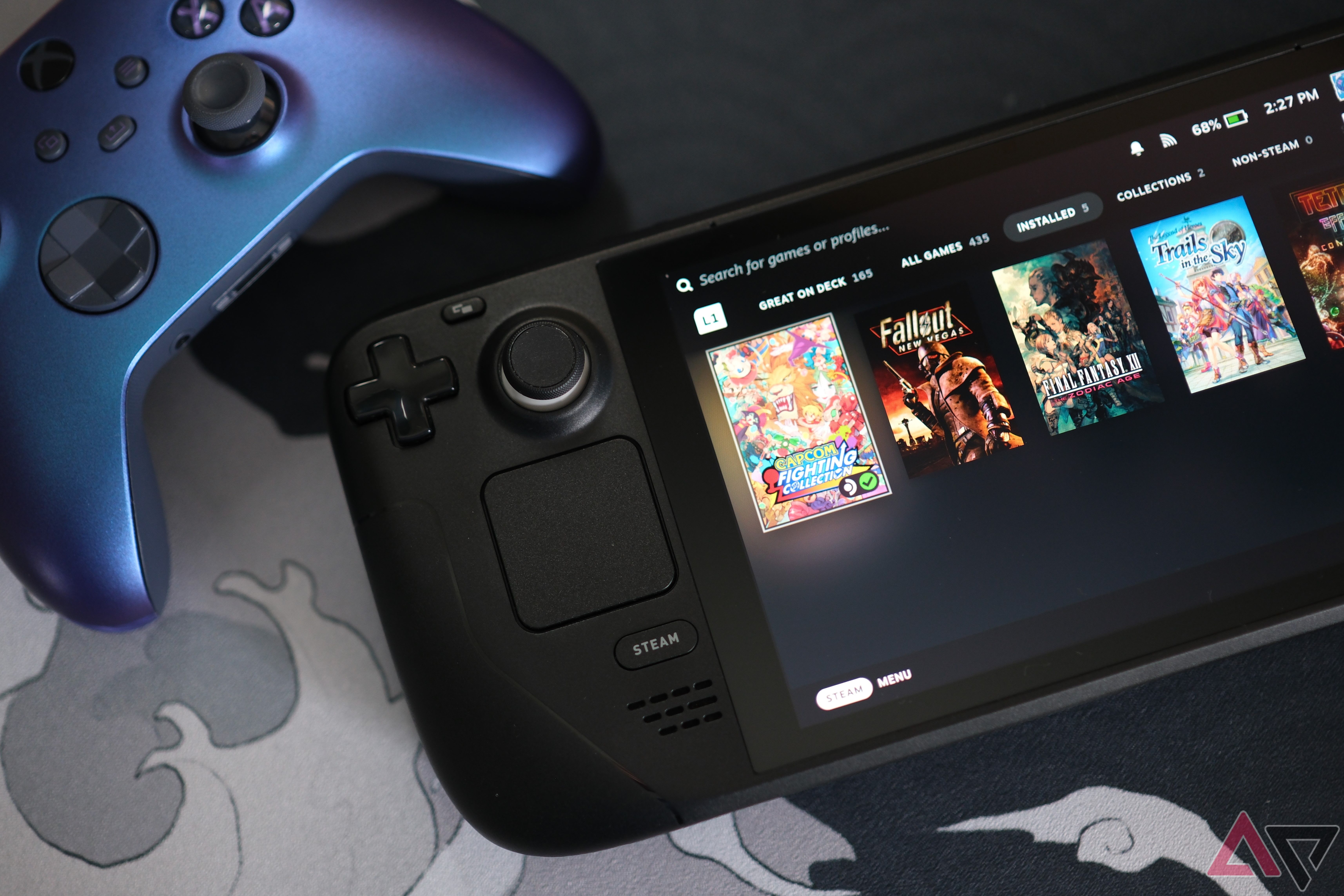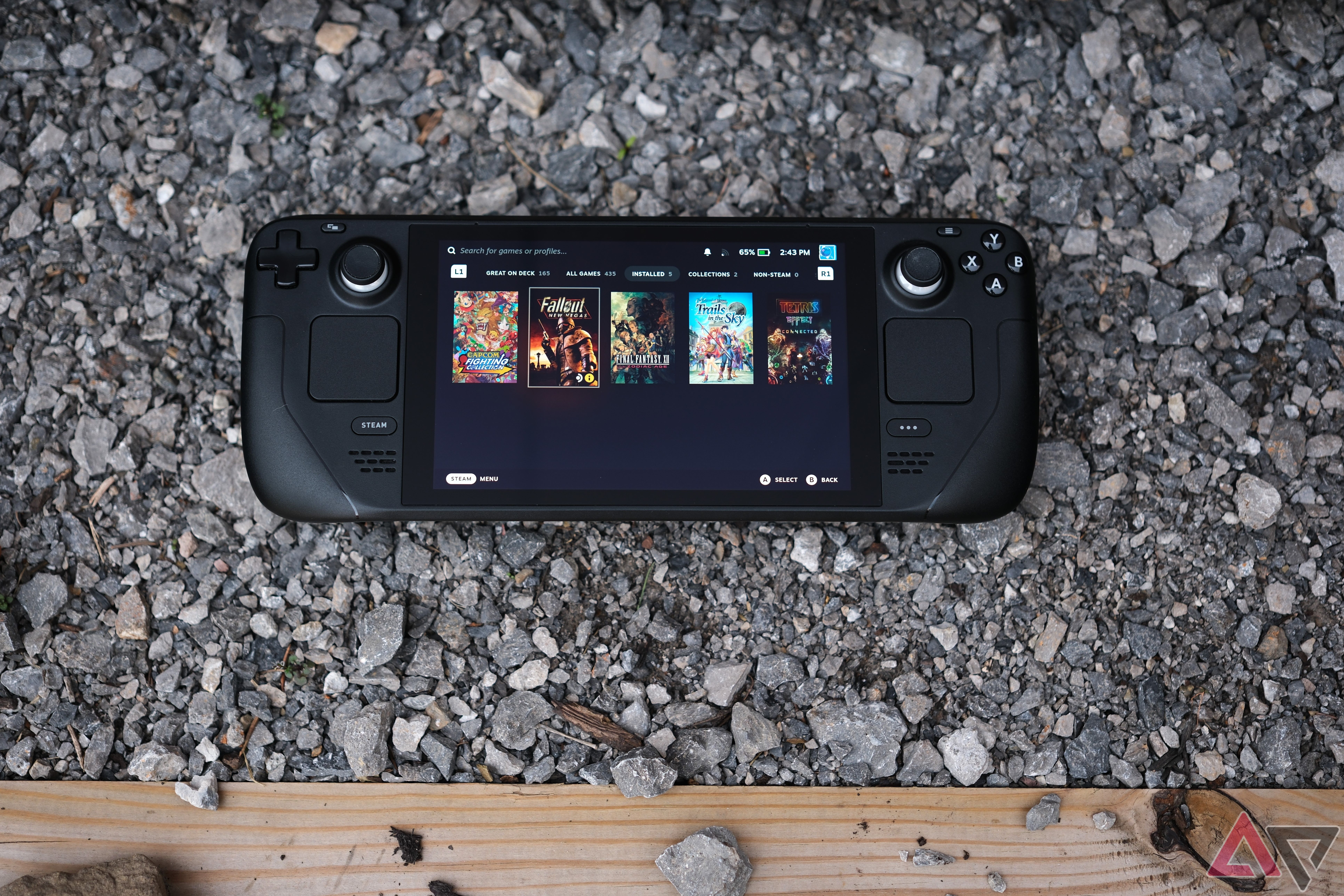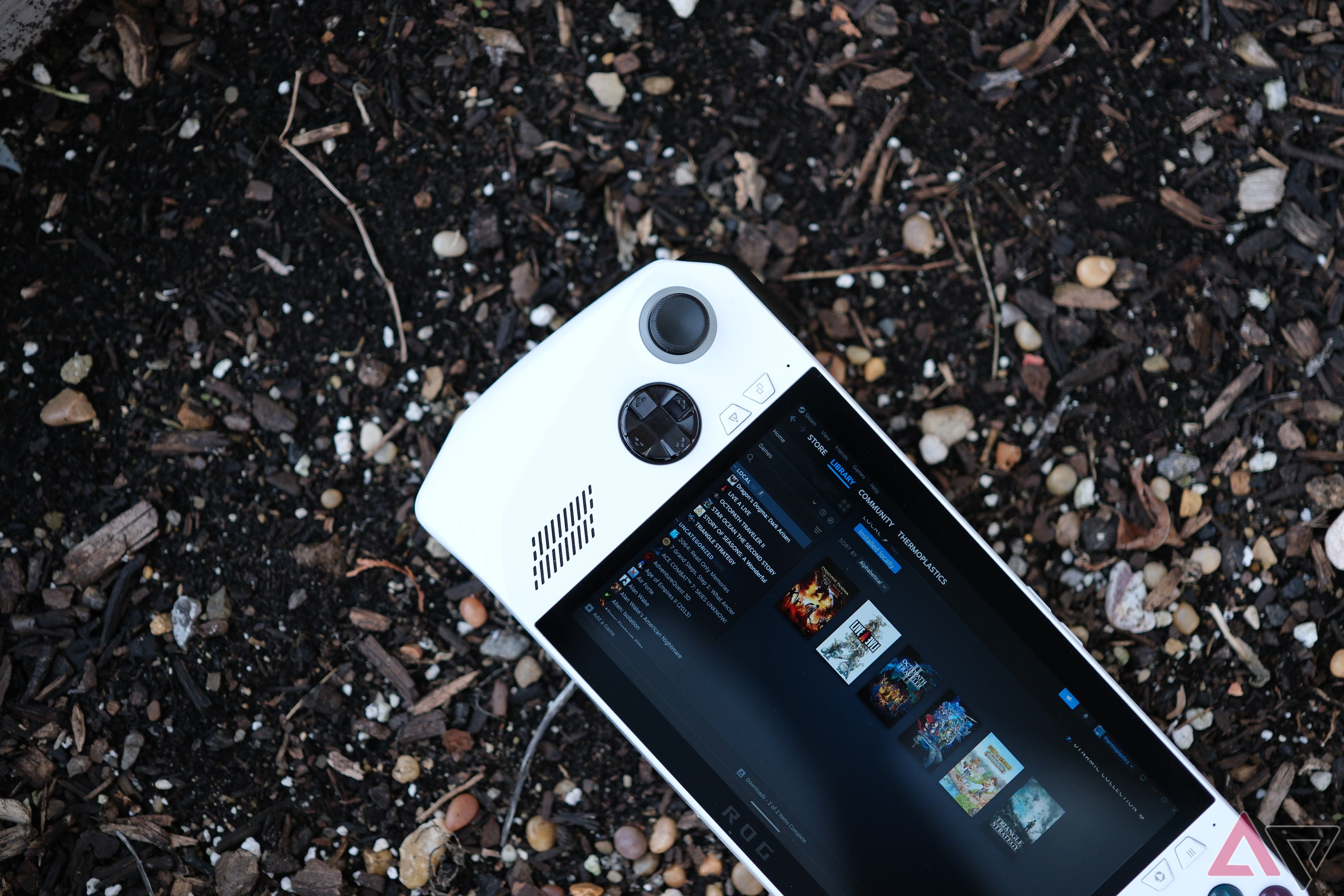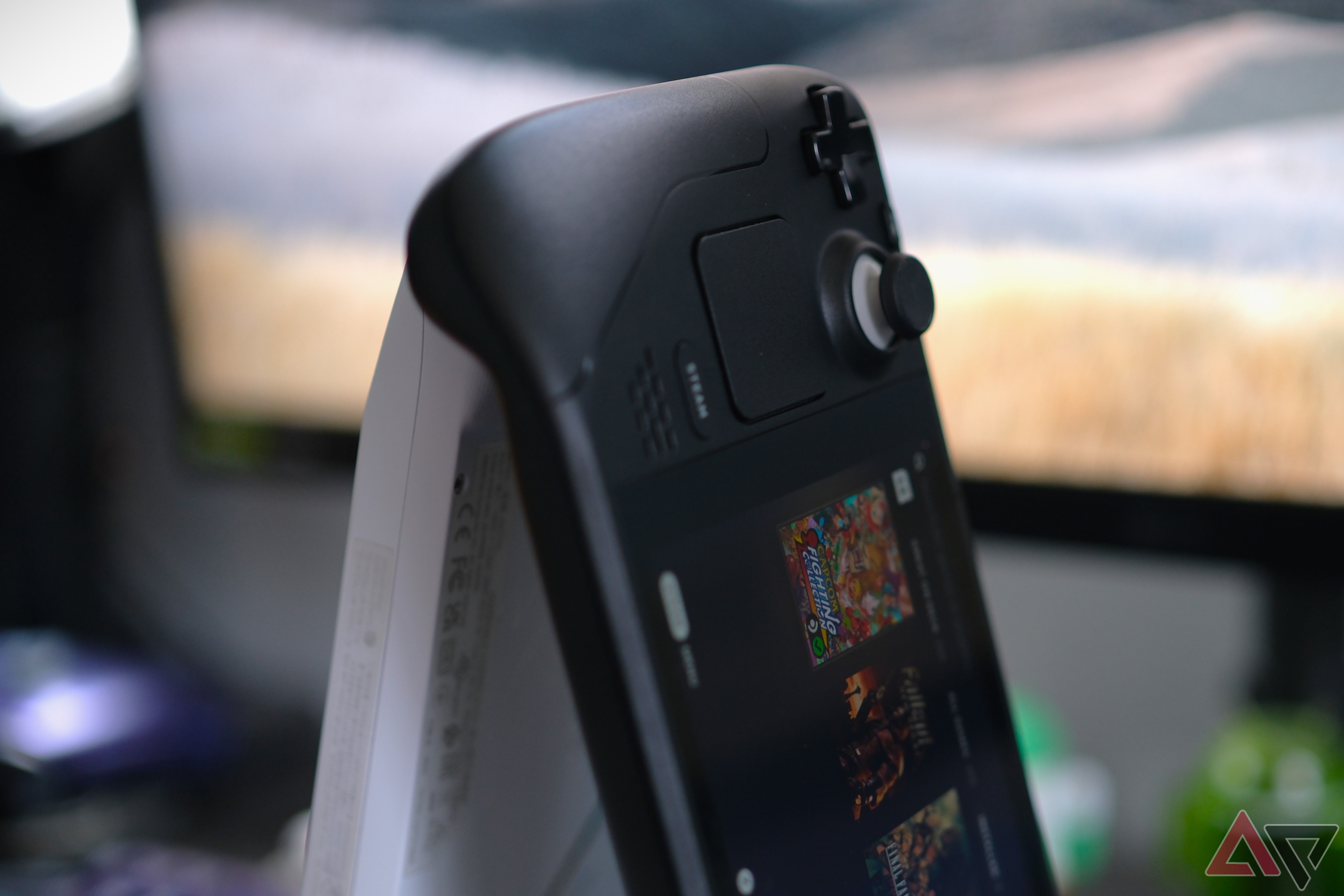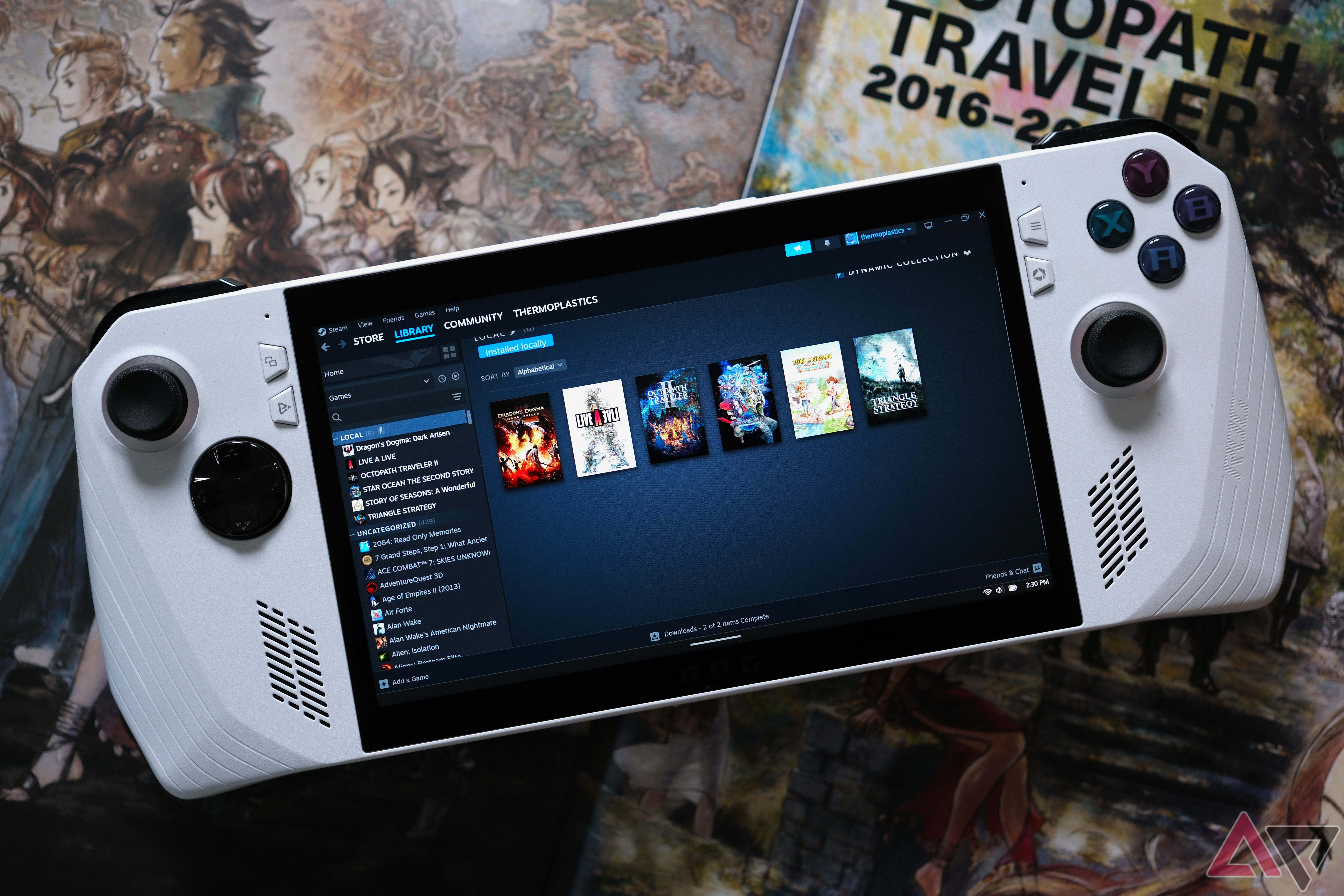-
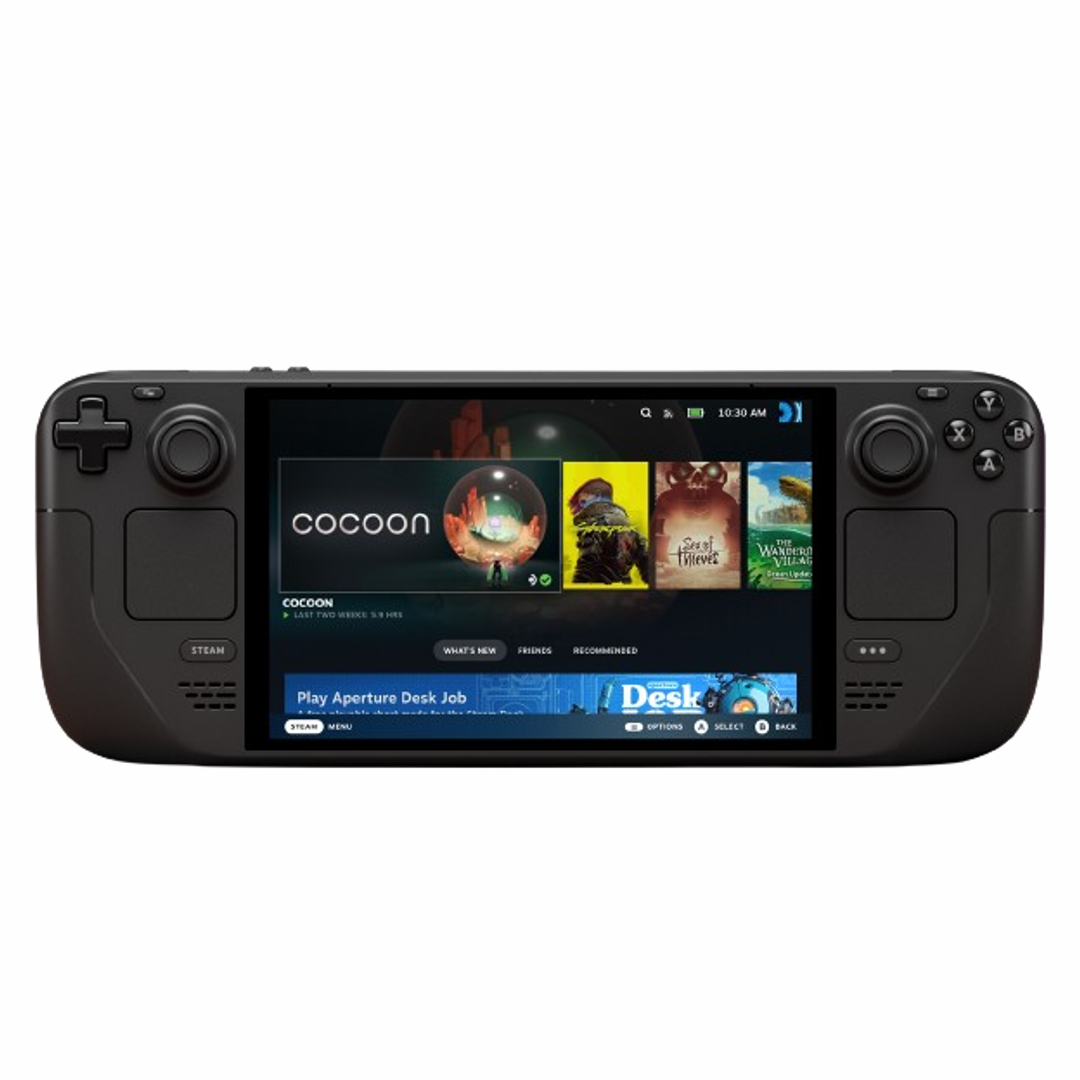
Steam Deck
Great software experience
The Steam Deck offers some of the most affordable gaming hardware on the market. Despite some bugs and missing features, the handheld console strikes a great balance between performance, battery life, and quality of life. However, you’re limited to games on Steam unless you’re willing to tinker with the Linux-based OS.
Pros- Fantastic performance for the price
- Versatile and customizable controls
- User-friendly software
Cons- No support for Game Pass
- Many games aren’t supported
- Steam Verified program is inconsistent
-

Asus ROG Ally
Powerful hardware
$400 $500 Save $100
The Asus ROG Ally is a mixed bag. While it’s capable of running the latest AAA games, the paltry battery life means you’ll need to be near a power bank or plug for uninterrupted gameplay. However, the portable form factor and Windows game compatibility are notable wins.
Pros- Small form factor
- Variable refresh rate up to 120Hz
- Fantastic performance
Cons- Expensive
- Inadequate battery life
- Windows isn’t as useful as you think
The Steam Deck stumbled out of the gate when it launched in 2022, but two years later, Valve has ironed out most of the bugs, offering a gaming handheld capable of handling an impressive amount of PC games at an affordable price point. The Asus ROG Ally, launched in 2023, offered better performance at a higher price, but poor optimization and abysmal battery life impeded it from becoming the Steam Deck killer rumors suggested it could be.
Both handhelds are affordable ways to play PC games on the go, but they each come with their own compromises, notably, the need to carry a portable power bank. But which one is best for you? Let’s find out.

Best Android handheld consoles in 2024
From retro handhelds to streaming powerhouses, there’s an Android handheld for every situation
Price, availability, and specs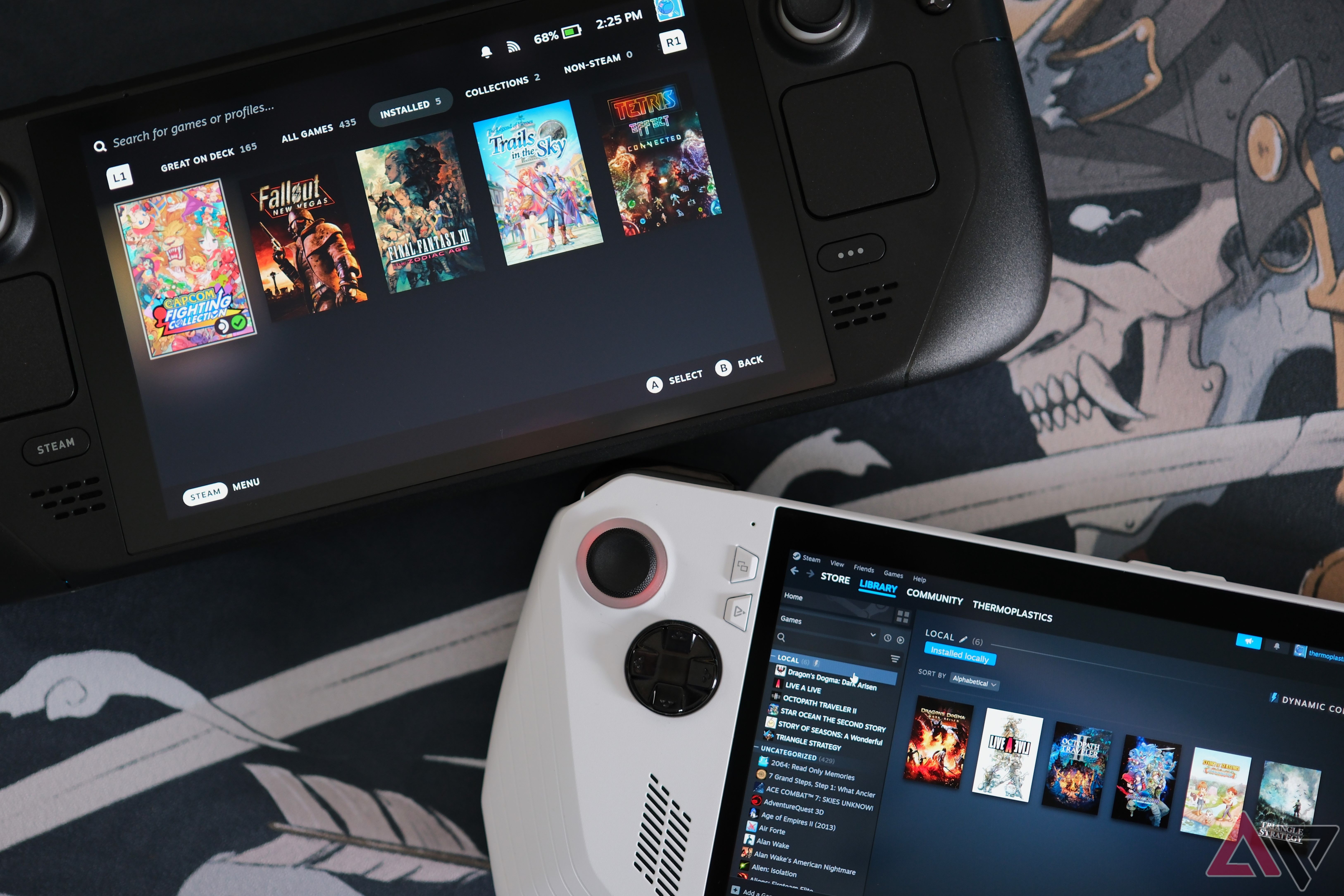
The Steam Deck is only available through Valve’s storefront (accessible online or through the Steam app), but it ships free to Europe, Japan, Australia, New Zealand, the UK, the US, and Canada. Valve has phased out all but one of the original models, leaving the $399 256GB option as the last LCD Steam Deck you can buy.
Valve also sells an OLED model of the Steam Deck starting at $549. This model has a bigger OLED screen, higher refresh rate, larger battery, and Wi-Fi 6E support. For this article, we’re only comparing the LCD model with the ROG Ally.
On the other hand, the Asus ROG Ally is available through numerous retailers, including Asus’ store and Best Buy. Asus sells it for $600, or you can save some cash by buying it for $500 through Best Buy.
-
Steam Deck Asus ROG Ally Dimensions 298 x 117 x 49mm 280mm x 111mm x 21mm Playing Time 2-8 hours 1-4 hours Brand Valve Asus Weight 669g 608g Chipset Zen 2 AMD APU 2.4-3.5GHz AMD Ryzen Z1 RAM 16GB 16GB Storage 256GB 512GB Wireless Connectivity Bluetooth 5.0, Wi-Fi 5 Bluetooth 5.2, Wi-Fi 6E Headset Compatibility 3.5mm jack, Bluetooth 3.5mm jack, Bluetooth Display 7-inch 1280 x 800 LCD, 60Hz 7-inch 1920×1080 LCD, 120Hz Output resolution 4K@120Hz, 8K@60Hz 1080p, 4K Graphics AMD RDNA 2, 1.6GHz AMD RDNA 3 Ports Headphone jack, USB-C, MicroSD 3.5mm audio jack, USB-Type C, microSD Battery 5,200mAh 40Whr
Design and controls
Comfort vs portability
Valve might have set out to create a gaming handheld, but they were pushing it with the Steam Deck console that weighs more than two Nintendo Switches. However, its rounded edges and grip are comfortable to hold for long periods, and the button layout, while odd to look at, makes sense when you grip the console and your thumbs rest naturally in the right place. Apart from the size, the most noticeable feature is the two trackpads on either side of the screen. These are for games designed with mouse inputs in mind but don’t get in the way when using the face buttons.
The Asus ROG Ally, on the other hand, offers a more familiar layout with offset joysticks and face buttons. There are no trackpads here, and the overall form factor is easier to hold for long periods; it’s 60 grams lighter than the Steam Deck. However, the smaller design means it’s more akin to the Nintendo Switch in terms of grip; the Steam Deck offers a more stable gaming experience thanks to its larger but form-fitting design.
Which one is better entirely comes down to your gaming preferences. Thanks to its versatile and customizable controls, the Steam Deck is better if you prefer playing a broad range of PC games, from RTS to FPS games. However, the Asus ROG Ally offers a more compact gaming experience for games designed with controllers in mind. The weight is also better for longer gaming sessions, although this point is rendered somewhat moot by the battery life (more on that later).
Display
Little difference in practice
The Steam Deck has an unusual 1280 x 800 screen that caps out at 60Hz. The 400 nits brightness cap isn’t impressive on paper, but the result is more than enough for a 7-inch screen. What’s slightly tricky to get used to is the 16:10 screen ratio, which adds black bars to many games and can cause problems when the screen is extended to some external displays.
The Asus ROG Ally offers a 1920 x 1080p screen that can reach a 120Hz refresh rate and 500 nits brightness. This variable refresh rate is perfect for FPS games, where that extra refresh rate is handy for competitive games. However, you’ll have to lower the graphics significantly to reach more than 60FPS on modern games, but we’ll discuss performance in detail later. The impressive display also affects the ROG Ally’s already weak battery life.
The Asus ROG Ally offers a screen that’s sharper, brighter, and more compatible with external displays than the Steam Deck’s. However, the Steam Deck’s screen is certainly not disappointing and doesn’t drain the battery life as much. If you can’t stand black bars on your screen, the ROG Ally is the better option. Otherwise, there isn’t much to differentiate between the two devices’ screens in practice.
Software
Do you prefer versatility or a user-friendly design?
The Steam Deck runs on a Linux-based OS, offering a seamless gaming experience for playing titles from your Steam Library. It can also run emulators natively, and apps like the Epic Games Store and Xbox Game Pass can work by installing Windows, although this route is janky at best and barely functional at worst. It’s not as limiting as it sounds though, thanks to Valve’s efforts to ensure compatibility with as many Steam games as possible.
Valve’s “Deck Verified” program
helps identify which games run well on the Steam Deck, but it isn’t perfect. Many games deemed “Deck Verified,” suffer significant performance issues, while “Unsupported” games often run fine. We recommend referring to other people’s experiences with your favorite games online before purchasing.
The Asus ROG Ally runs Windows, and while this seems like an advantage at first, as you can technically play any game compatible with the OS, Asus has done absolutely nothing to ensure compatibility. This means that while every game that runs on Windows will always boot, performance can vary wildly across games with similar hardware requirements.
Overall, the Steam Deck’s custom software offers a substantially more streamlined experience with better optimization for the games it supports. Asus’ Armoury Crate software is a useful interface for accessing your games comparable to Steam OS, but the limitations of Windows on a touch-screen become immediately apparent when you close Armoury Crate to access the OS to change settings or open files.
Performance
Both consoles offer inconsistent performance
While both handheld consoles use AMD processors, the Steam Deck offers an older CPU based on Zen 2 architecture, whereas the Asus ROG Ally’s is based on Zen 4. There are a lot of numbers to crunch here, but the result is that the ROG Ally is substantially more powerful than the Steam Deck on paper. This is true for most games, although the lack of optimization means some less-demanding games run better on the Steam Deck.
The Asus ROG Ally can easily handle games like The Outer Wilds, which the Steam Deck won’t load. You can also hook up external GPUs for a substantial performance boost. This is especially useful when the console is docked and is a feature completely missing on the Steam Deck.
If you need a handheld gaming console capable of handling the most demanding games, the ROG Ally is a better choice. However, if you value more consistent (but lower) performance, the Steam Deck is better. But it comes with the compromise of less game support and the chance that game updates completely stop compatibility. For pure performance, the ROG Ally is the best choice.
Battery life
Don’t leave home without a power bank
The Steam Deck and the ROG Ally have a battery capacity of 40 watt-hours. So, if a game uses 40W, the battery life should last one hour. However, the ROG Ally’s demanding hardware and display mean it struggles to match the Steam Deck.
Even with the least demanding battery settings, the ROG Ally struggles to reach four hours of gameplay, dropping below an hour for the most demanding games. The Steam Deck isn’t much better, dropping as low as one and a half hours for the same games. However, less intensive games like Stardew Valley should last much longer on the Steam Deck, sometimes up to seven hours.
Which is right for you?
It all depends on what games you play
Despite its limited game support out of the box and difficulty handling demanding games, the Steam Deck offers a reasonably consistent handheld experience. While there are noticeable shortcomings, Valve is steadily ironing out the bugs; the Steam Deck today is a very different console than it was at launch. The Steam Deck is the best choice if you want a comfortable way to play PC games on your couch or when you’re out of the house.

Steam Deck
Editor’s choice
Great gaming handheld with lots of pros
The Steam Deck is a brilliant handheld gaming console, but compromises are the name of the game here. It’s a versatile console that handles an impressive array of games without struggling on the performance side; just check if your favorite games actually work before you buy.
Asus focused its efforts on ensuring the ROG Ally was the best-performing handheld gaming console, with a display to match. Unfortunately, this came at the cost of nearly everything else. While demanding games are enjoyable, some are borderline unplayable, thanks to the ROG Ally’s lack of optimization. This is on top of its lackluster battery life, which barely lets you make the most of the hardware. However, it’s the better choice if you only play for an hour or two at a time and mostly play FPS games.

Asus ROG Ally
Runner-up
Formidable alternative with some shortcomings
$400 $500 Save $100
The Asus ROG Ally offers unbeatable handheld gaming performance and a fantastic LCD, but despite its versatility, Windows is a difficult OS to work with on a handheld console. But if all you care about is FPS, the Asus ROG Ally is the console to get.
Source link

